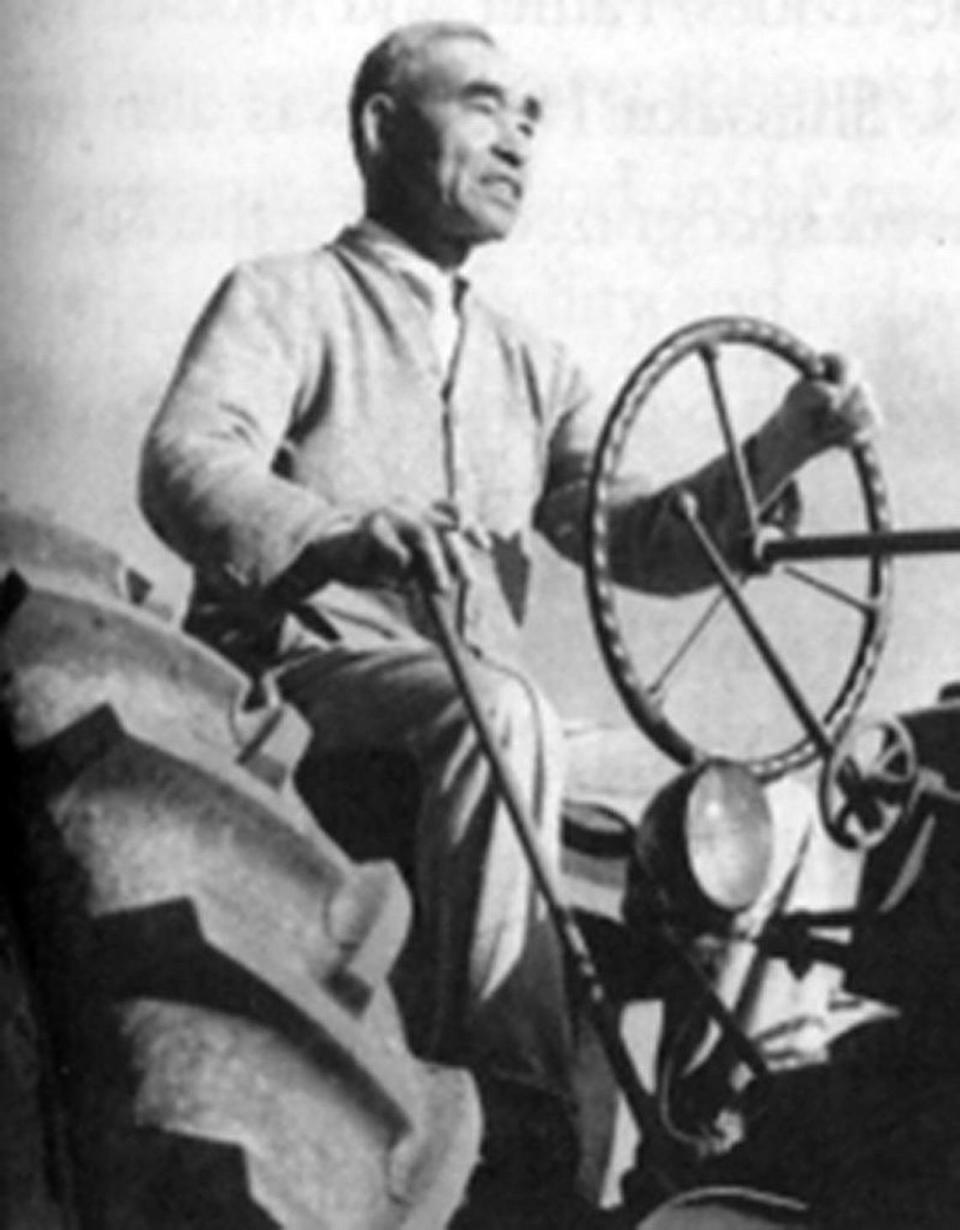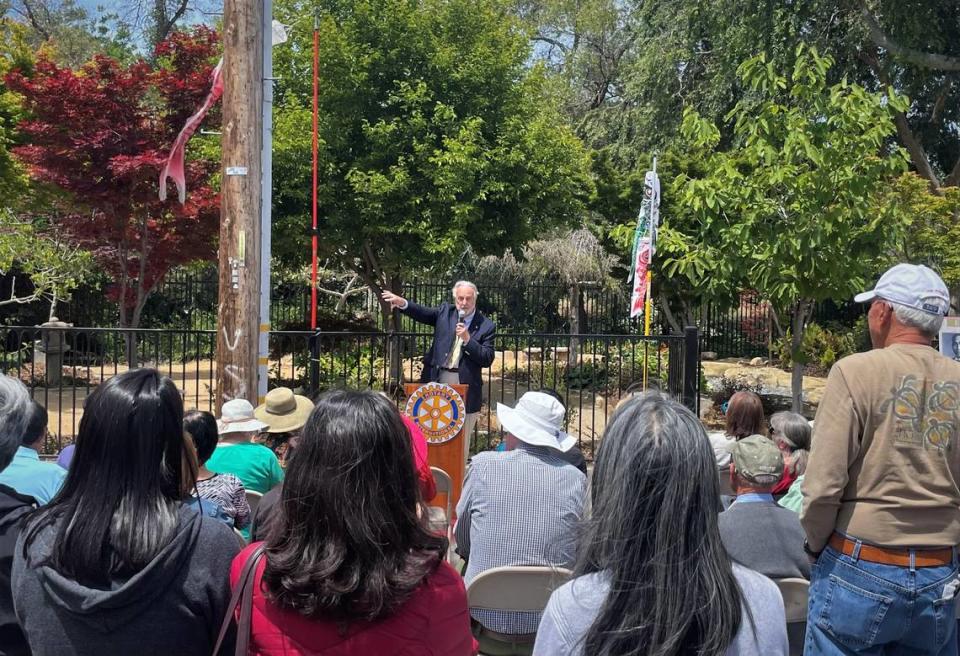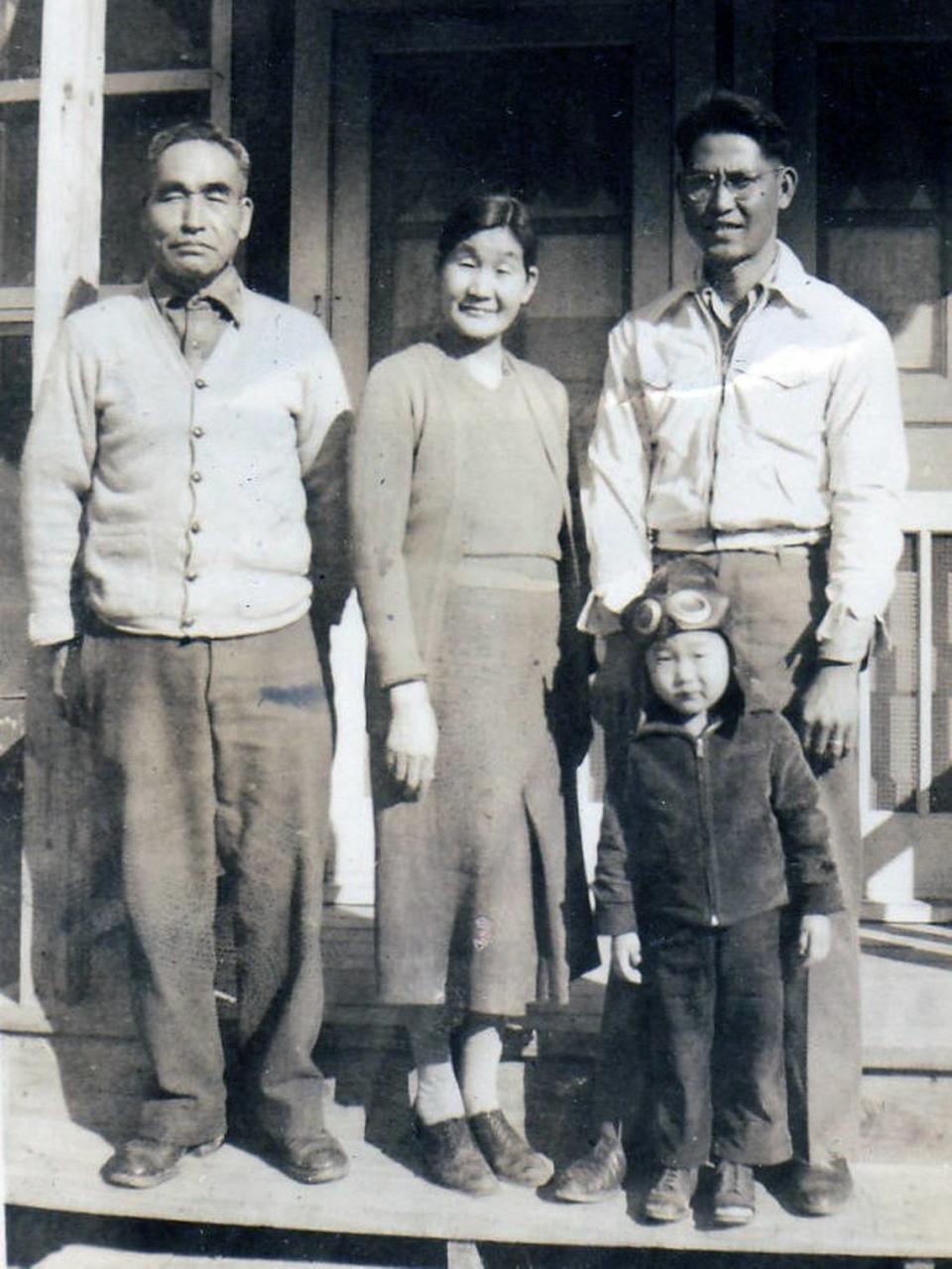20 years later, SLO re-dedicates park named after prominent Japanese family
Tucked away in a quiet corner of San Luis Obispo, there’s a tiny, tranquil garden.
Eto Park, with its bright Japanese Red maple tree and other carefully maintained plants, is a lasting reminder of San Luis Obispo’s Japanese heritage. It sits on at the end of Brook Street, a short, mostly-residential road sandwiched between the bustling Highway 101 and at-times equally busy Higuera Street, in what was once the heart of the city’s Japantown.
On May 12, 20 years after Eto Park was built, the community members gathered to honor that legacy and the prominent Eto family that lent the park its name. Their history reflects some of the darkest times in California’s history.
The re-dedication ceremony attended by a slew of city officials and Rotary Club of San Luis Obispo members who originally helped build the park and led its recent refurbishment, as well as local historians and members of the Eto family.

During the ceremony — held on a sunny, somewhat blustery, afternoon — numerous people spoke about the impact the Etos had on San Luis Obispo. They singled out the achievements of patriarch Tameji Eto, a pioneer in the local agriculture industry.
Beside founding his family’s ranch in Los Osos, Tameji Eto also developed much of the city’s Japantown in the 1930s. The road were the park now sits was once called Eto Street, in honor of him.
“(Tameji Eto) came to America — the ‘land of opportunity’ as we all hear,” grandson Ron Kikuchi said during the May 12 ceremony, “and to do that, he had to be enthusiastic, fearless, have a vision and a goal, in spite of not speaking any English at the time. That’s amazing, isn’t it?”

Then, in 1942, shortly after Japan’s attack on Pearl Harbor, President Franklin D. Roosevelt signed Executive Order 9066, forcibly removing thousands of Japanese Americans from their homes and into isolated concentration camps along the West.
The Etos, as well as other Japanese residents living in San Luis Obispo County, were incarcerated in these prison camps.
Almost overnight, San Luis Obispo’s once-thriving Japantown disappeared. Eto Street was renamed, becoming Brook Street instead.
Even though they were incarcerated, some members of the Eto family still voluntarily enlisted in the U.S. military and fought throughout World War II, Eto family friend and Rotary Club member Jim Brabeck said during the May 12 ceremony.

American service members included Leo Kikuchi — Ron Kikuchi’s father — who was married to one of Tameji Eto’s daughters, Suzy.
According to Brabeck, Leo Kikuchi went to Tameji Eto while he was detained at an internment camp and asked his permission to enlist.
“Tameji Eto, the patriarch of this family, said ‘Leo, you must. You must enlist. And you must fight for this country — this is your country,’” Brabeck said.
Leo Kikuchi was killed in action during the war, while his entire family was still incarcerated.
“Think about that — that’s the sacrifice that man made for our freedom,” Brabeck said. “And here we are, middle kingdom, east of Eden, beautiful day, because of people like Leo.”

Brabeck, who was one of the driving forces behind Eto Park’s creation in 2002, said he felt the park showed what could happen when a community comes together.
“We demonstrated if we work together, we can accomplish anything,” he said.
Beside Brabeck and Ron Kikuchi, other speakers included Rotary Club President Joel Sheets, San Luis Obispo Vice Mayor Carlyn Christianson and local historian Dan Krieger.
The ceremony concluded with Karen Nagano, a grandniece of Tameji and Take Eto, reading the commemorative poem, “A Garden,” which is displayed at the park. Reverent Naomi Nakano of the San Luis Obispo Buddhist Church offered closing words of inspiration.

